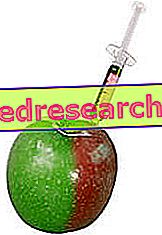
What is Kinzalkomb?
Kinzalkomb is a medicine that contains two active substances, telmisartan and hydrochlorothiazide. It is found in the form of an oval tablet (red and white: 40 mg or 80 mg of telmisartan and 12.5 mg of hydrochlorothiazide; yellow and white: 80 mg of telmisartan and 25 mg of hydrochlorothiazide).
What is Kinzalkomb used for?
Kinzalkomb is used in patients with essential hypertension (high blood pressure) that is not adequately controlled with telmisartan alone. The term "essential" indicates that hypertension has no obvious cause.
The medicine can only be obtained with a prescription.
How is Kinzalkomb used?
Kinzalkomb should be taken by mouth once a day with a liquid drink, with or without food. The dose of Kinzalkomb to use depends on the dose of telmisartan the patient was taking previously: patients receiving 40 mg of telmisartan should take the 40 / 12.5 mg tablets and patients receiving 80 mg of telmisartan should take the tablets from 80 / 12.5 mg. 80/25 mg tablets should be used in patients whose blood pressure is not controlled using 80 / 12.5 mg tablets or in patients who have been stabilized using the two active substances separately before switching to Kinzalkomb.
How does Kinzalkomb work?
Kinzalkomb contains two active substances, telmisartan and hydrochlorothiazide.
Telmisartan is an "angiotensin II receptor antagonist", which means it inhibits the action of a hormone in the body called angiotensin II. Angiotensin II is a powerful vasoconstrictor (a substance that narrows blood vessels). By blocking the receptors to which angiotensin II normally attaches, telmisartan prevents the hormone effect by letting the blood vessels dilate.
Hydrochlorothiazide is a diuretic, another type of treatment against hypertension. It works by increasing urine excretion, reducing the amount of fluid in the blood and lowering blood pressure.
The combination of the two active ingredients has an additional effect, reducing blood pressure to a greater extent than the two medicines taken individually. Reducing blood pressure reduces the risks associated with hypertension, such as having a stroke.
What studies have been carried out on Kinzalkomb?
Kinzalkomb was analyzed in five main studies involving a total of 2, 985 patients with mild to moderate hypertension. In four of these studies, Kinzalkomb was compared with placebo (a dummy treatment) and with telmisartan taken as a whole in 2 272 patients. In the fifth study, the effects of the continuation of the 80 / 12.5 mg tablet were compared with those of switching to the 80/25 mg tablet in 713 patients who had not responded to the 80 / 12.5 mg tablet. In all the studies the main measure of effectiveness was the reduction of diastolic blood pressure (blood pressure measured between two heartbeats).
What benefit has Kinzalkomb shown during the studies?
Kinzalkomb was more effective than placebo and telmisartan alone in reducing blood diastolic pressure. In patients who had not been controlled with the 80 / 12.5 mg tablet, switching to the 80/25 mg tablet was more effective than continuing with the lower dose in lowering the diastolic blood pressure.
What is the risk associated with Kinzalkomb?
The most common side effect with Kinzalkomb (seen in between 1 and 10 patients in 100) is dizziness. For the full list of all side effects reported with Kinzalkomb, see the Package Leaflet.
Kinzalkomb should not be used in patients who may be hypersensitive (allergic) to telmisartan, hydrochlorothiazide, sulphonamide or any of the other ingredients (including sorbitol). It must not be used in women who have been pregnant for more than three months. Not recommended for use during the first three months of pregnancy. Nor should Kinzalkomb be used in people who have severe problems with their liver, kidneys or bile, who have too low levels of potassium in their blood or too high levels of calcium in their blood.
Particular attention should be paid if Kinzalkomb is taken with other drugs that affect the level of potassium in the blood. For the full list of these drugs, see the package leaflet.
Why has Kinzalkomb been approved?
The Committee for Medicinal Products for Human Use (CHMP) decided that Kinzalkomb's benefits are greater than its risks for the treatment of essential hypertension in patients whose blood pressure is not adequately controlled with telmisartan alone. The committee recommended that Kinzalkomb be given marketing authorization.
More information on Kinzalkomb:
On 19 April 2002, the European Commission issued a marketing authorization for Kinzalkomb, valid throughout the European Union. The marketing authorization was renewed on 19 April 2007. The marketing authorization holder is Bayer Schering Pharma AG.
For the full EPAR for Kinzalkomb, click here.
Last update of this summary: 05-2009.



